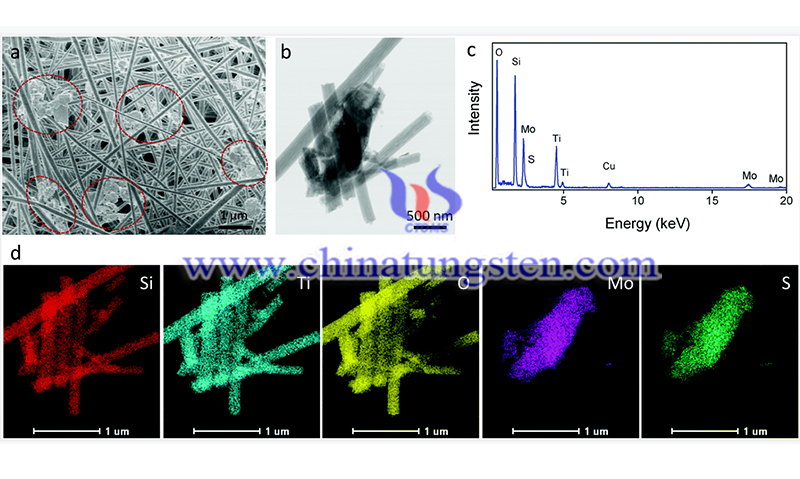Metallic MoS2 Composite Membrane Realizes Osmotic Energy Conversion
- Details
- Category: Tungsten's News
- Published on Monday, 15 March 2021 20:44
It is reported that researchers from the Technical Institute of Physics and Chemistry of the Chinese Academy of Sciences have designed a low-dimensional metallic MoS2 composite membrane, which can achieve high-efficiency osmotic energy conversion due to its high ionic conductivity and excellent mechanical properties. The salt disparity energy can be better converted into electrical energy.
Molybdenum disulfide (MoS2) has shown large promise in harvesting osmotic energy. However, the current investigations generally focus on proof-of-concept nanoscale single-pore devices with a semiconductor phase structure. Exploration of the application viability of MoS2 in a more robust macroscopic-scale two-dimensional (2D) nanofluidic membrane and acquisition of fundamentals of how the phase structure influences the power generation process are highly demanded.

Robust and stable composite membranes made up of 2D metallic MoS2 can act as high-performance osmotic power generators. Both experiments and simulations reveal that the higher electron density of metallic MoS2 increases the affinity of cations to the surface, which renders the system excellent ion selectivity and high ionic flux and greatly promotes transmembrane ion diffusion. When natural river water and seawater are mixed, the power density can achieve about 6.7 W m–2. This work shows the great potential of metallic MoS2 in nanofluidic energy devices.
The osmotic energy between seawater and river water is a kind of renewable energy. The total amount of osmotic energy that can be collected in the world is twice the annual hydroelectric power generation. Reverse electrodialysis technology is an effective method to convert salt difference energy into electrical energy. Although its application prospects are good, it is widely used in real life due to the poor performance of core membrane modules.
Researchers have developed a high-strength and stable two-dimensional Molybdenum disulfide composite membrane, which is composed of high-concentration metal phase MoS2 nanosheets and one-dimensional nanocellulose (CNF). Studies have shown that when man-made river water and seawater are mixed, the output power density of the composite membrane can reach 5.2W/m2. Compared to the semiconductor phase molybdenum disulfide membrane, the electron density of the high-concentration metal phase molybdenum disulfide membrane is higher. With a greater affinity for cations, the system owns excellent ion selectivity and high ion-flux, which can greatly promote power generation.
In addition, the metallic MoS2 composite membrane can also work stably under natural water conditions without blocking multivalent ions, and the power output is as high as 6.7W/m2. Relevant researchers said that the osmotic energy conversion performance of the system under artificial and natural water sources not only surpasses commercial ion-exchange membranes but also surpasses the most advanced macroscopic 2D nanofluidic membranes.
This work demonstrates the great potential of macroscopic MoS2 powders and highlights the key role of phase engineering in regulating ion diffusion. The research results were published in "JACS" with the title "Metallic Two-Dimensional MoS2 Composites as High-Performance Osmotic Energy Conversion Membranes".
| Molybdenum Supplier: Chinatungsten Online www.molybdenum.com.cn | Tel.: 86 592 5129696; Fax: 86 592 5129797;Email:sales@chinatungsten.com |
| Tungsten News & Prices, 3G Version: http://3g.chinatungsten.com | Molybdenum News & Molybdenum Price: http://news.molybdenum.com.cn |



 sales@chinatungsten.com
sales@chinatungsten.com